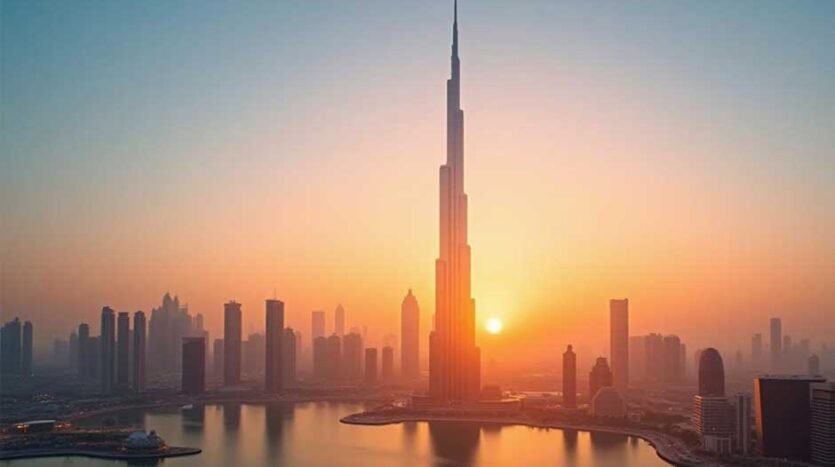Seizing the Moment: A Whirlwind Dive into Middle Eastern Real Estate Investment
In the vast and rapidly transforming landscape of the Middle East, a new narrative is being written—one shaped not by oil barrels, but by bricks, data, and ambition. Enter middle-east.realestate: the region’s definitive real estate compass, guiding investors through an ecosystem charged with potential, volatility, and innovation.
With tectonic shifts in demographics, bold diversification agendas, and a tech-forward embrace of infrastructure mega-projects, the region’s property markets are no longer quiet contenders—they’re global magnets. Investors, both seasoned and new to the fold, find themselves navigating a storm of numbers, trends, and digital breakthroughs—all demanding sharp insight and swift action.
The Pulse of the Market: Numbers that Speak Volumes
USD 388.7 billion — that’s the total market size of Middle Eastern real estate as of 2024. Fast forward to 2033, and forecasts push that number toward a staggering USD 834.8 billion, with a CAGR of 8.2% (IMARC Group). This isn’t gradual growth; it’s a seismic leap, powered by vision-fueled projects, borderless capital, and liberalized ownership laws.
Regional Glimpses: A Kaleidoscope of National Booms
Dubai, UAE: The Relentless Rocket
2024 saw Dubai’s residential prices skyrocket by 19.1%, reaching an average of AED 1,685 psf (USD 459). Villas outpaced the norm, sprinting to AED 2,009 psf, while apartments followed closely behind at AED 1,640 psf. This uptick wasn’t arbitrary—international demand surged while prime inventory remained scarce, culminating in AED 422 billion in transaction volume (Knight Frank, Zawya).
Saudi Arabia: The Giga-Builder’s Playground
With a jaw-dropping USD 1.06 trillion in pipeline projects—over 60% of the region’s development volume—Saudi Arabia is putting concrete behind its Vision 2030 dreams. Yields in Riyadh hit 6.93%, bolstered by a deluge of residential and mixed-use developments backed by the kingdom’s mammoth Public Investment Fund.
Qatar: Post-World Cup Reawakening
Doha’s residential sector, rejuvenated by post-2022 optimism, boasts yields of 4.57% and price points averaging QAR 9,800/sqm for apartments and QAR 8,400/sqm for villas (TopLuxuryProperty).
Oman: The Underrated Gem
Often bypassed in regional chatter, properties for sale in Muscat, Oman, quietly expanded its housing stock by 3.6% in 2024, totaling 1.1 million units. With Muscat’s average prices resting at USD 2,830 per sqm and a residential market scaling toward USD 6.80 billion by 2029, this sultanate is scripting its own success story, slow but steady.
Cross-Border Trends & Investor Behavior: A Shifting Map of Capital Flows
As the Middle East real estate narrative becomes increasingly globalized, cross-border investment trends reveal the emergence of sophisticated investor behavior marked by diversification, regulatory agility, and an appetite for first-mover advantage. Sovereign wealth funds, family offices, and international property funds are no longer limiting their scope to one jurisdiction—instead, they are mapping portfolios across multiple GCC markets to hedge geopolitical, legal, and currency risks.
For example, investors bullish on high-yield income assets may pair residential holdings in Riyadh with short-let properties in Dubai to balance liquidity and appreciation. Meanwhile, institutional players are zeroing in on untapped potential in secondary markets like Sharjah and Salalah, where land is cheaper, and municipal incentives are being introduced to attract capital.
Additionally, intra-regional investment flows are intensifying: UAE-based developers are launching branded projects in Jeddah, while Saudi real estate conglomerates are actively acquiring land in Abu Dhabi. Technology, particularly AI-driven valuation tools and blockchain-based title registries, is further enabling this fluidity by reducing the friction traditionally associated with managing assets across jurisdictions.
The rise of “borderless portfolios” is not just a trend but a structural shift—marking a new phase of maturity in the region’s real estate investment culture. For savvy investors and institutions alike, agility in navigating this pan-GCC terrain will be the difference between riding the wave and missing it entirely.
The Yield Game: Who’s Paying Off?
| City | Average Rental Yield |
|---|---|
| Riyadh (Saudi Arabia) | 6.93% |
| Dubai (UAE) | 6.31% |
| Doha (Qatar) | 4.57% |
Property Picks: A Tour Through Typologies
- Villas: The crown jewels of Gulf luxury. High-net-worth individuals (HNWIs) are doubling down on premium estates in Emirates Hills and Palm Jumeirah, where prime segments posted an 18.2% annual appreciation.
- Urban Apartments: The urban warrior’s choice. Constituting over 80% of Dubai’s future supply, these offer an ideal entry point for yield-focused investors.
- Affordable Flats: Riyadh and Doha are showcasing a quiet revolution, making quality housing both accessible and profitable.
- Traditional Homes: Oman’s culturally steeped Arabic houses provide both character and investor-friendly returns, especially within niche tourism-linked markets.
Enter PropTech: The Digital Earthquake
What was once face-to-face is now digitized and on-demand. As of 2022, MENA captured 9.9% of the global PropTech scene, valued at USD 1.8 billion, barreling toward USD 8.5 billion by 2032 at a compelling CAGR of 16.8%.
Innovations Reshaping Reality:
- Fractional Ownership: Dubai’s Stake platform raised USD 14 million, democratizing property investing for the crowd-curious.
- Smart IoT Homes: Energy-efficient, AI-guarded living spaces are the new norm in master-planned communities.
- VR & AR Tours: Virtual walkthroughs have morphed from gimmick to industry standard, particularly in Dubai and Riyadh’s high-rise launches.
Buying into the Future: Your Due Diligence Playbook
Legal Landmarks: Verify freehold eligibility—zones like DIFC in Dubai or investment corridors in Muscat are prime spots for non-GCC investors.
Financing Insights: Mortgage rates range from 4.0%–6.3% in Oman, with GCC averages orbiting 3%–5%, subject to nationality and lender dynamics.
Investigate First, Invest Later: Employ certified appraisers, legal advisors, and always cross-check a developer’s track record and ownership documentation.
Where to Look: Skip the sketchy listings. Stick with vetted portals for authentic, analytics-driven discovery.
The Final Word: Real Estate as the Region’s Renaissance
This isn’t just about property—it’s about positioning. Investors savvy enough to ride the convergence of digitization, reform, and demographic expansion can unlock powerful returns. From Dubai’s architectural swagger to Oman’s under-the-radar rise, the Middle East presents a spectrum of plays for capital growth, income, and legacy building.
Be bold. Be strategic. And most of all—be early.


